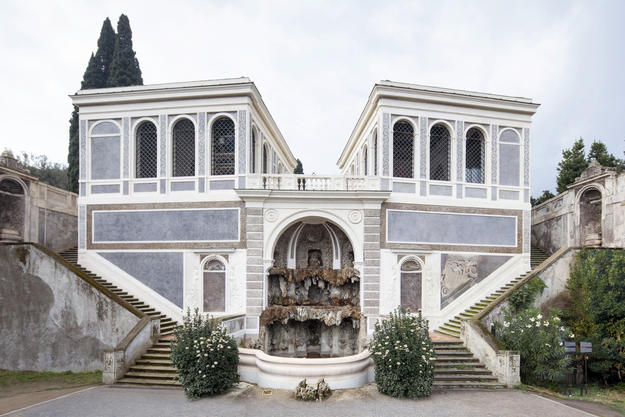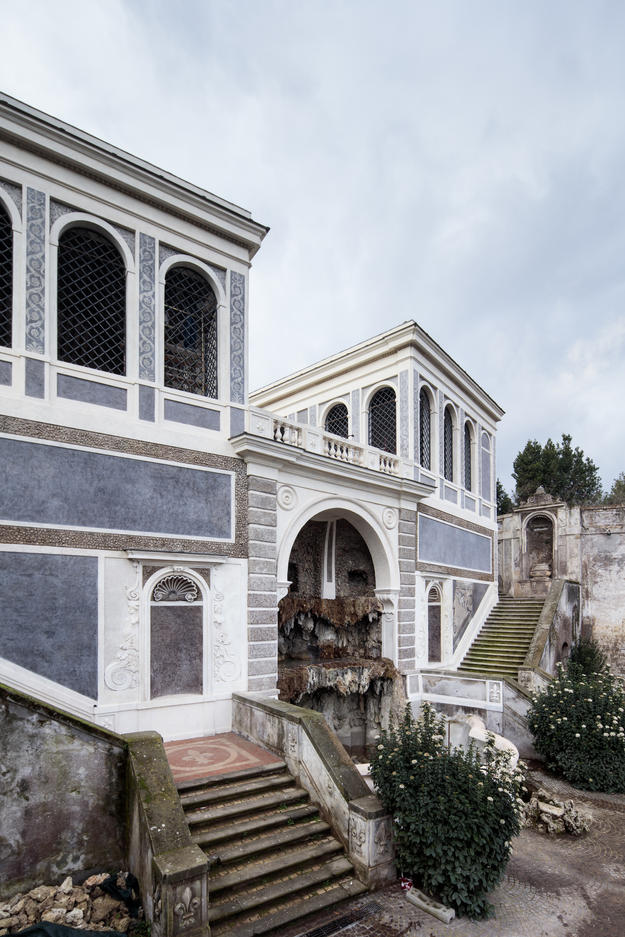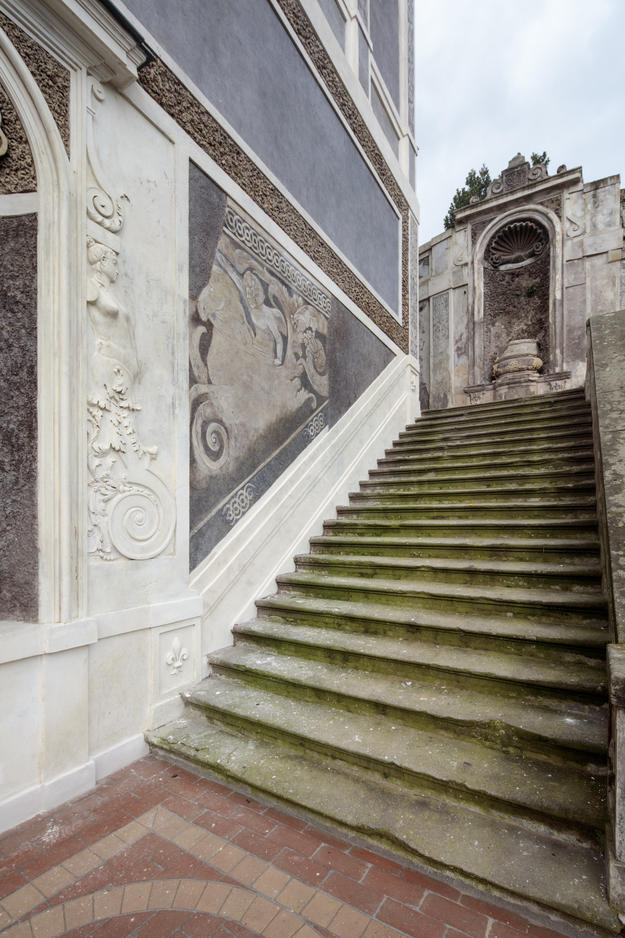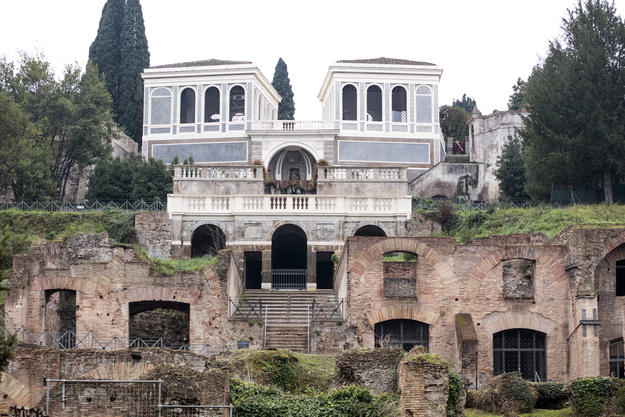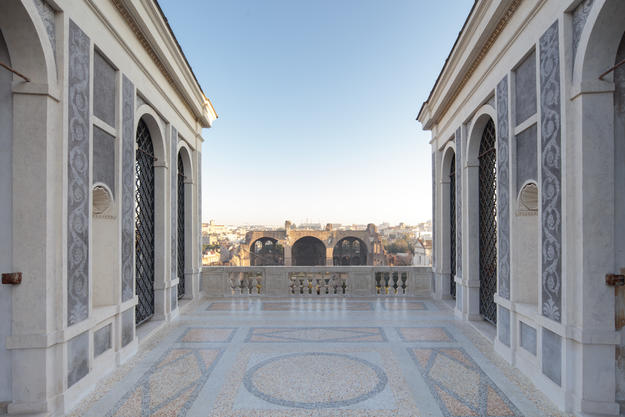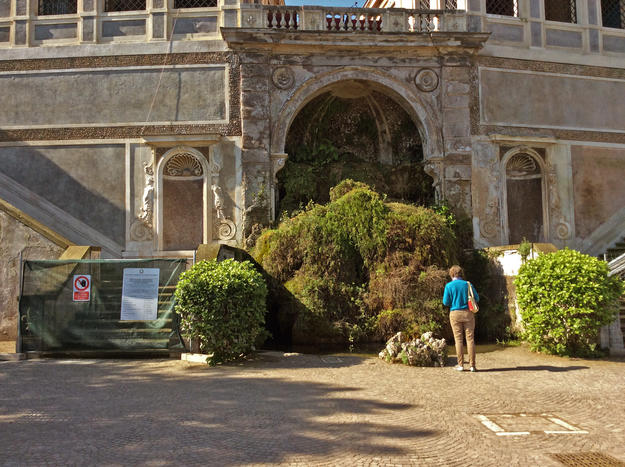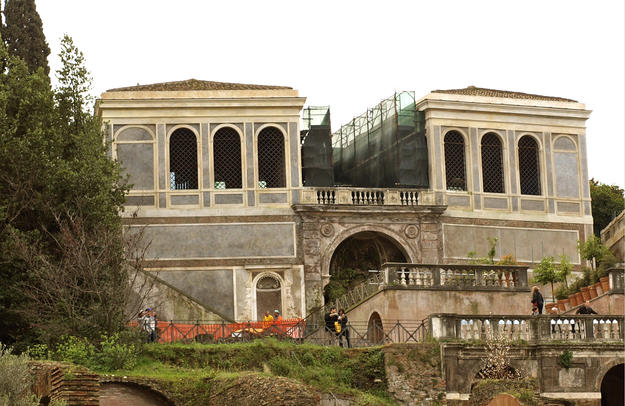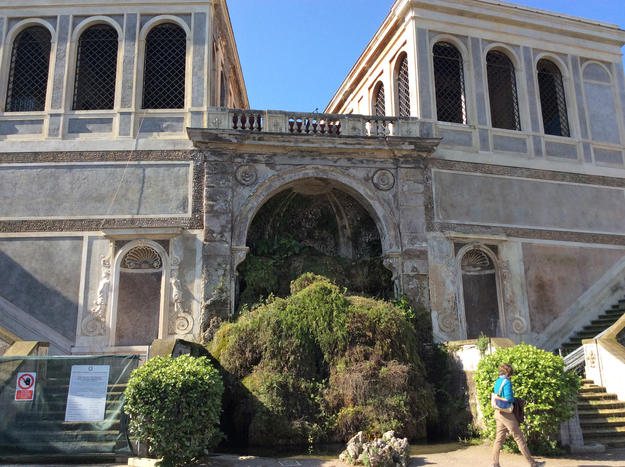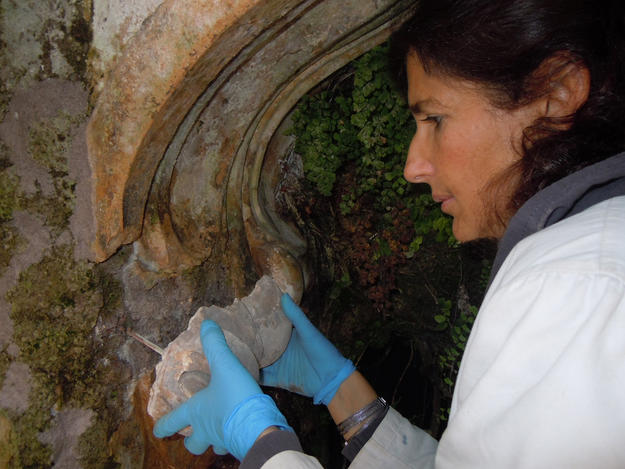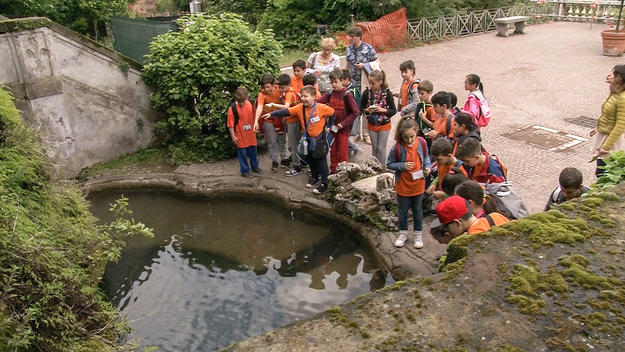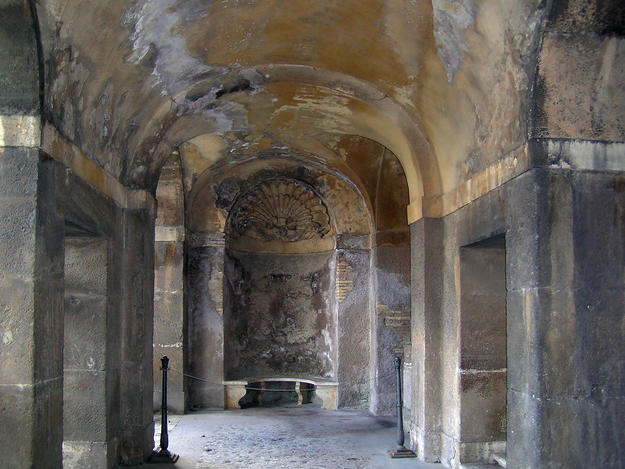Farnese Aviaries
2014 World Monuments Watch
The Farnese Aviaries are located on the Palatine Hill, once the heart of ancient Rome. Creation of the Farnese gardens began in the sixteenth century, when leading Roman families controlled the land on the Palatine. The garden complex included a variety of structures connected with terraces, stairs, and ramps leading to the top of the Palatine Hill from the Roman Forum. The aviaries are twin square pavilions, arranged at an angle to each other, and originally decorated using sgraffito, a technique employing different layers of plaster. The garden complex was described in countless travelers' accounts, and was depicted in numerous engravings, drawings, sketches, prints, and paintings between the sixteenth and nineteenth centuries. The Farnese Aviaries represent the best-preserved Renaissance remains on the Palatine Hill, and are one of the few spaces suitable for public interpretation and programming relating to this period of the hill’s history.
Layers of History Clarified and Restored
The gardens were created on top of rich archaeological remains, including the first-century Palace of Tiberius, and lost much of their form with archaeological excavations starting in the late nineteenth century. The gardens were restored and the original curving metalwork roofs of the pavilions were replaced in the nineteenth century with timber and terracotta tiles, but the aviaries stayed untouched for more than half a century. Due to prolonged lack of maintenance, the architectural surfaces were in a highly deteriorated condition. The aviaries were listed on the 2014 World Monuments Watch, spurring restoration work to combat the advanced state of decay. Historical research and in-depth conditions surveys on the aviaries were completed in early 2014, allowing the conservation team to generate a work plan. External remediation work, restoration of one of the stairways leading up from the plaza, and an updated water dispersal system were early priorities.
Following inclusion on the Watch, the site received support from the Robert W. Wilson Challenge to Conserve our Heritage, the Selz Foundation, American Express, Friends of Heritage Preservation, and Sydney Weinberg. Between 2013 and 2018, WMF and the Soprintendenza Speciale Archeologica di Roma (today the Parco Archeologico del Colosseo) collaborated in the comprehensive treatment of the aviaries, including assessment and restoration of the front façade, the restoration of the interiors, and the restoration of the fountain, known as Teatro Delle Fontane. A press event and Watch Day in May 2016 signaled the beginning of the restoration campaign. Watch Day focused on community engagement and featured a series of site visits and workshops, where local students learned about the vegetation in the surrounding gardens and the new phases of conservation work that would be carried out. Subsequent work focused on the cleaning and consolidation of the external façade surfaces as well as restoration of the Venetian pavement in the terrace between the two pavilions. These efforts aimed to bring back the historic decorative continuity of the aviaries and protect the modern and archaeological structural elements below the terrace from rain and groundwater filtration. The restoration project also provided the opportunity to address the structural consolidation of the aviaries, a particularly relevant topic in Italy following the seismic activity that affected the region in 2016. The structural intervention revealed hidden cavities from a twentieth-century installation of four fireplaces and chimneys that provided heat for the building at a time when the terrace and pavilions formed a single structure.
At the Teatro delle Fontane (Theater of Fountains), the expert team of conservators studied the history and construction of the structure, which revealed that the current configuration of the fountain had been the result of decades of deferred maintenance and the sedimentation of mineral rich Roman water. The calcareous mass covered by vegetation had once been a series of basins. After a challenging removal process, the fountain was restored to its original configuration and finish, while upgraded plumbing systems improved its functionality. The project was completed in summer 2018 and the Farnese Aviaries are once again open to the public, providing an enhanced visitor experience and public understanding of this complex archaeological site, and revealing a fuller and more comprehensive history of this important part of Rome.

